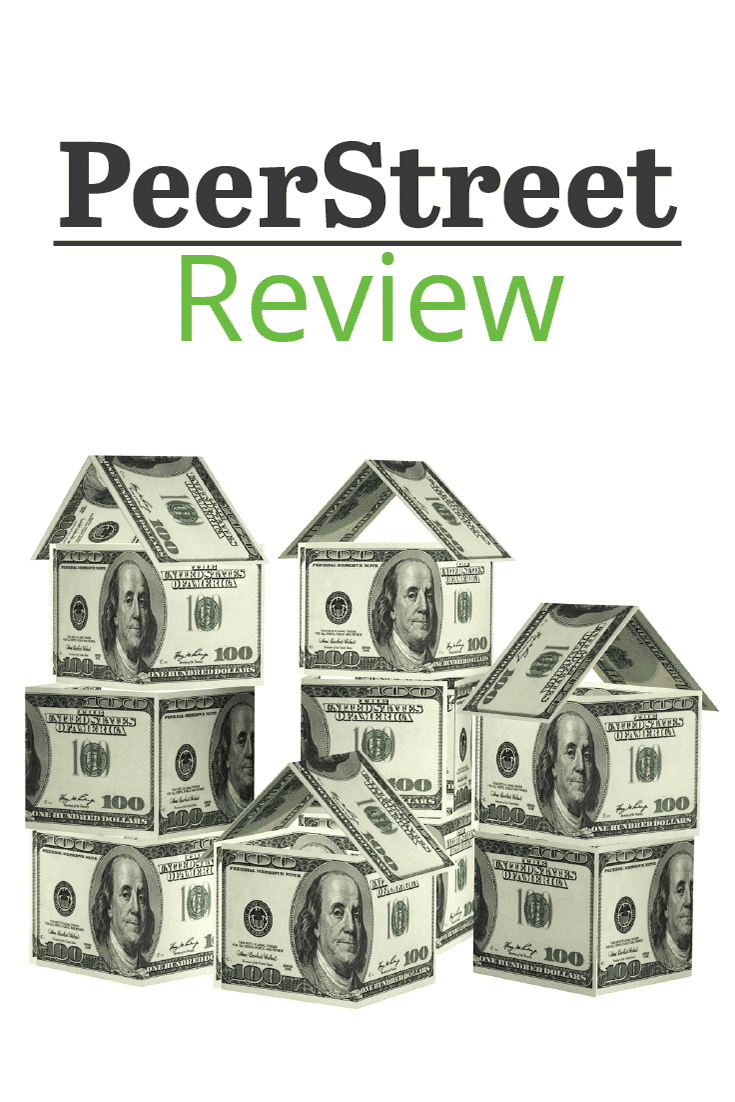
Editor's Note: Peerstreet declared bankruptcy on June 26, 2023. As a result, it appears to be shutting down it's operations and selling it's assets.
The internet changed the way that the United States does finance. As borrowers, we expect to find loan information online. Chase approved me for my latest credit card seconds after I applied online.
You can look for mortgages, student loans, and personal loans online. You can even lend money to peers using platforms like Lending Club.
But not every market changed at the same pace. Even today, hard money lending is a fractured and inefficient market. PeerStreet aims to change that. PeerStreet is the first online platform that helps investors to invest in hard money loans.
Quick Summary
- Crowdfunding for real estate loans
- Solid track record of returns and payment history
- Variety of loan types and durations
What Is PeerStreet?
PeerStreet is a “crowdfunding” platform for real estate loans. It’s crowdfunding in the sense that investors pool money together to buy a real estate loan. Most people conflate crowdfunding with peer to peer lending. PeerStreet is not a peer to peer lending platform because PeerStreet doesn’t lend directly to borrowers.
It’s more accurate to call them a secondary loan marketplace. PeerStreet buys loans from private lenders who have already made the deal. Most of the loans on the platform are commercial real estate improvement or development loans.
A typical loan on PeerStreet has a maturity around one year. Over the course of the last several years, PeerStreet’s entire portfolio of loans has earned 7-12% annually after the investment fees (of up to 1%).
All loans on the PeerStreet platform are backed by a First Lien position. That means if the project goes belly-up, PeerStreet gets the underlying asset. At that point, PeerStreet will liquidate the asset and investors will get some money back. It’s still unclear how much investors will lose during a default because PeerStreet still hasn’t had a borrower default on a loan.
Nobody should expect that record to last, but PeerStreet investors have some downside protection.
Best Parts of PeerStreet
PeerStreet uses data science and a manual underwriting process to select the best loans for PeerStreet investors. Their zero default record shows that the highly fractured and inefficient real estate market means investors have a chance to make heady risk adjusted returns.
PeerStreet also encourages investors to maintain a diverse portfolio of loans. With a $1,000 per loan minimum, most investors can diversify into a nationwide marketplace without too much difficulty. In fact, PeerStreet even makes it easy to invest automatically. Investors just input investment settings, and PeerStreet matches them with loan investment opportunities.
Finally, all loans on PeerStreet are backed by a hard asset (real estate), and the loans typically have a great loan-to-value ratio. In general, investors will find LTVs between 60-70% of the property’s value. The max LTV on the PeerStreet platform is 75%. Most people would call this a low risk loan.
Worst Parts Of PeerStreet
So far, PeerStreet has offered investors high returns and low risk, but the platform has its own drawbacks. First, to invest on PeerStreet, you need to be an accredited investor.
“Accredited Investor” is a term designated and defined by the Securities and Exchange Commission (SEC). Under the federal law Regulation D in the Securities Act of 1933, certain companies are exempt from registering the sale of securities, which are typically forms of stocks or bonds, and in the case of PeerStreet, real estate debt. If exempt, companies are required to sell only to accredited investors. The law was designed to protect those individuals without a certain net-worth from major loss of liquidity, when purchasing an unregistered security. Accredited investors are viewed as more sophisticated investors, capable of taking on the risk that some securities present.
That means you need to have a net worth of greater than $1 million (excluding the value of your home), or you need to earn more than $200,000 per year ($300,000 as a couple).
You should always keep in mind the illiquid nature of the investment. You cannot sell your investment. You have to wait for the borrower to pay off the loan before you get your capital back. The borrower will make interest payments throughout the life of the loan.
Another drawback to PeerStreet is that it’s hard for an outsider to estimate risk. Real estate is highly cyclical. We’re in an expansionary real estate market. That means that default risk on real estate loans is low right now. However, at some point in the future, borrowers will start to default on the PeerStreet loans. Investors have no expectations for how much they can recoup when a deal goes belly-up.
It’s my opinion that PeerStreet oversells the safety of their investments. Some of these loans are for renovations and remodels. The developer must complete the project, or the property will be worth less than when it started.
Finally, PeerStreet is an expensive platform. PeerStreet charges a servicing fee of 0.25-1% on every loan that you invest in. That means that if your loan yields 10%, you’ll receive a 9% interest rate.
How To Start Investing In PeerStreet
If you’re an accredited investor, you can create an account at PeerStreet and start browsing investment opportunities immediately. Whenever you’re ready, you can fund an account with as little as $1000 to start investing.
As soon as you find an investment you like, you can fund it with your money. You can even shelter your earnings using a self directed IRA.
What do you think of crowfunding investing? Would you ever consider trying it and why or why not?
PeerStreet Review
-
Commission & Fees
-
Customer Service
-
Ease Of Use
-
Deal Flow
-
Lender Information
-
Diversification and Risk Mitigation
Overall
Summary
PeerStreet is a peer to peer real estate lending platform where you can loan your money to other investors as a real estate loan. This loan may be used for a variety of real estate-related purposes.
Pros
- Earn a return by funding loans for real estate investors
- Platform makes it easy to see deals and connect
Cons
- There is a risk of default on your investment, meaning you could lose some or all of your investment
- The fees are higher than average (compared to ETFs and mutual funds)

Robert Farrington is America’s Millennial Money Expert® and America’s Student Loan Debt Expert™, and the founder of The College Investor, a personal finance site dedicated to helping millennials escape student loan debt to start investing and building wealth for the future. You can learn more about him on the About Page or on his personal site RobertFarrington.com.
He regularly writes about investing, student loan debt, and general personal finance topics geared toward anyone wanting to earn more, get out of debt, and start building wealth for the future.
He has been quoted in major publications, including the New York Times, Wall Street Journal, Washington Post, ABC, NBC, Today, and more. He is also a regular contributor to Forbes.
Editor: Clint Proctor Reviewed by: Claire Tak
